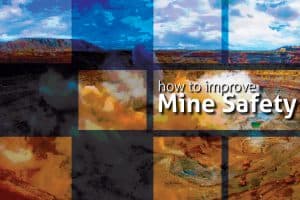 In the depths of a mine, communication is king. Not knowing what your fellow miners are doing is dangerous enough from a miner’s viewpoint, but it can be even more dangerous if managers and foremen can’t communicate effectively with miners and other experts. Depending on the kind of mining being conducted, simply being in a mine can be extremely dangerous. Being in the wrong place at the wrong time can lead to disaster. While there are plenty of things that can happen in a mine that can’t be planned for, mines become much safer if care and preparation is put into proper communication channels.
In the depths of a mine, communication is king. Not knowing what your fellow miners are doing is dangerous enough from a miner’s viewpoint, but it can be even more dangerous if managers and foremen can’t communicate effectively with miners and other experts. Depending on the kind of mining being conducted, simply being in a mine can be extremely dangerous. Being in the wrong place at the wrong time can lead to disaster. While there are plenty of things that can happen in a mine that can’t be planned for, mines become much safer if care and preparation is put into proper communication channels.
There are several modes of communication that work well in mines. Probably the most reliable is signage. Investing in the proper signs in the proper areas can save many lives by preventing workers from entering unsafe areas unprepared. Placement of these signs, as well as interpretation of them, is of course extremely important, but sometimes a few well-placed signs can prevent disasters before they become even minor problems.
Mining safety is all about reducing the chance of an identified calamities occurring, such as cave-ins, flooding, and more. Miners and mining companies know these risks and how to prevent them in most cases. It’s up to the vigilance and preparation of project leaders to prevent identified risks from causing major problems and unsafe conditions. Reducing the chances of identified risks can be accomplished with systems like Controlled Areas product, that allows dispatchers to have virtual alerts of restricted areas and access permits associated. Usually, when the mining operators know where risk areas are and how to manage safety access to them, they’re more prepared to reduce the chance of an identified risk becoming a serious problem.
Mine detection software and exploration equipment may be one of the best mine safety measures a mining company can take. But communication is the key to safety and success in mines, and those working with them need easy access to it. Many mines install communication systems that allow fast message delivery between the home base and the miners. Some systems use text messages to relay safety messages and inform others of hazards so that when disaster strikes, delays don’t cause unneeded deaths and injury. Mining accidents can happen in minutes, so each minute wasted could be the difference between life and death. These communication systems have the capability to send signals through the ground to miners and back to the control posts on the surface of the ground, a key technology that allows fast, reliable communication in mines.
Mines often have rapidly changing conditions that workers have to adapt to. They not only have to adapt to the natural materials around them shifting and potentially causing damage, they also have to adapt to how these materials affect radio and other electronic communication signals. Having groups with leaders who know what to do in a crisis is another key communication aspect that can save lives in mines in an emergency.








